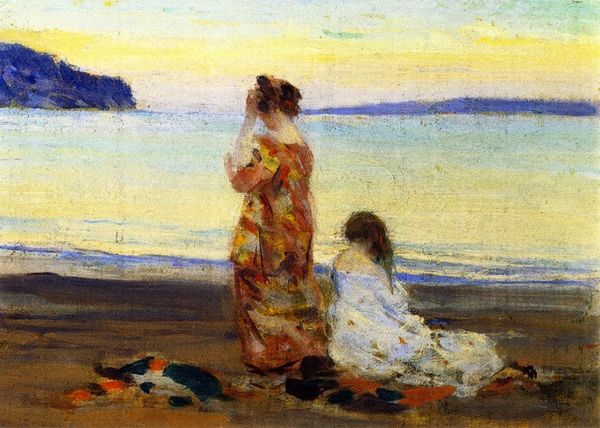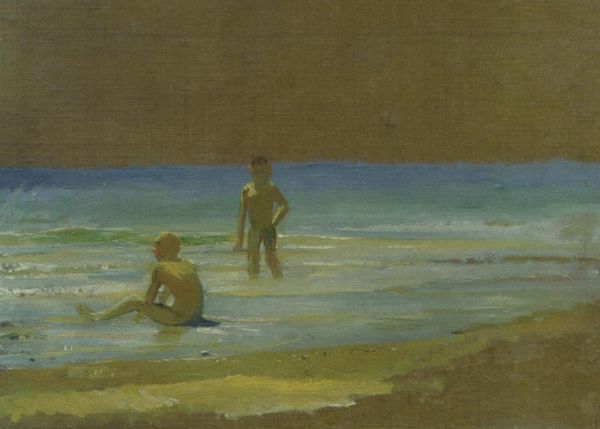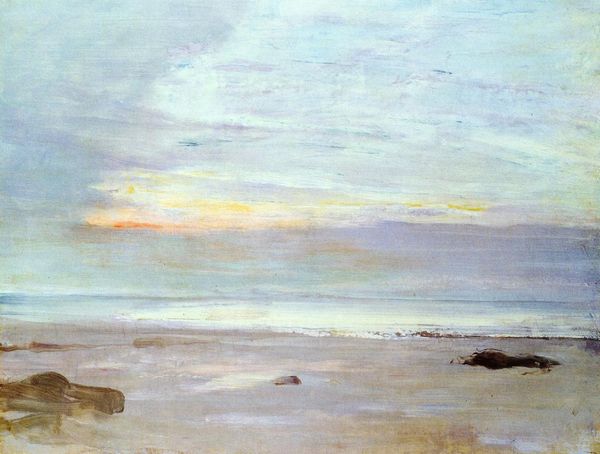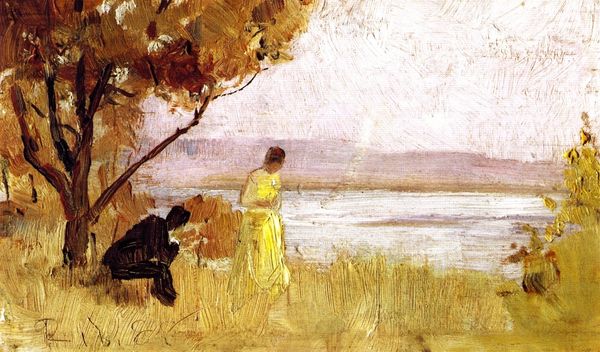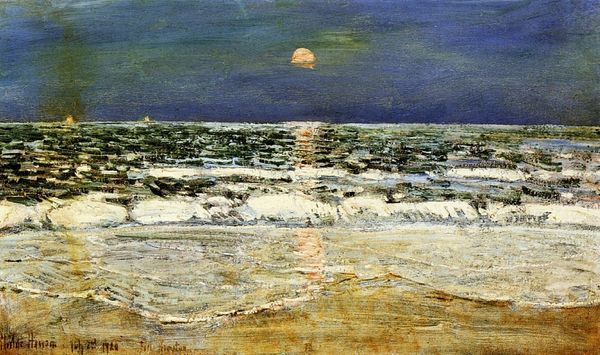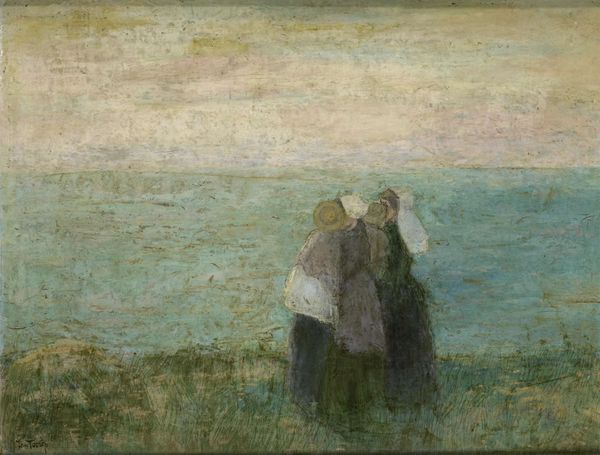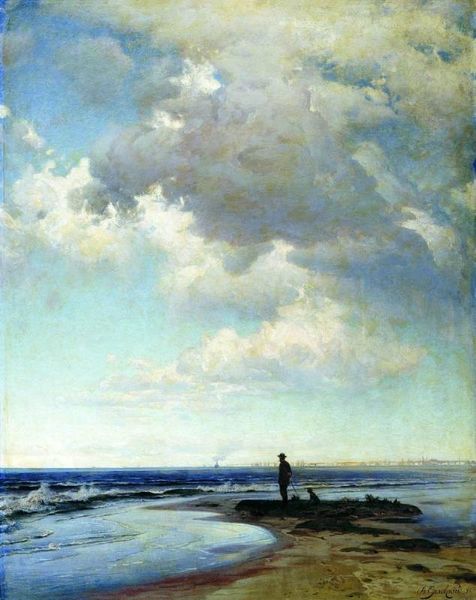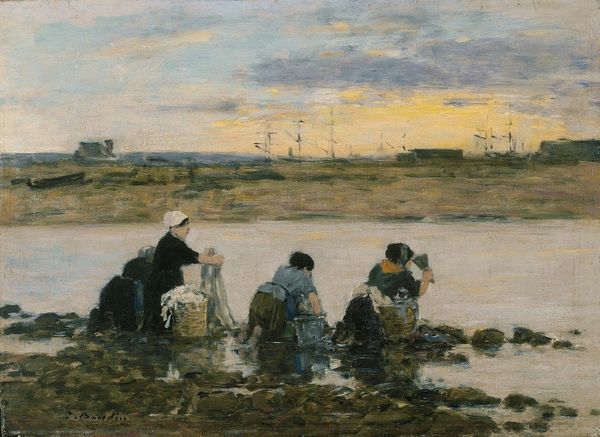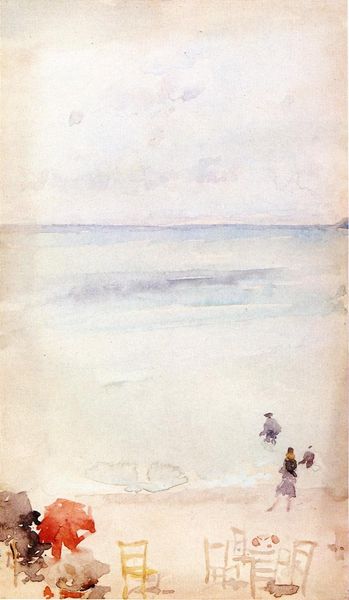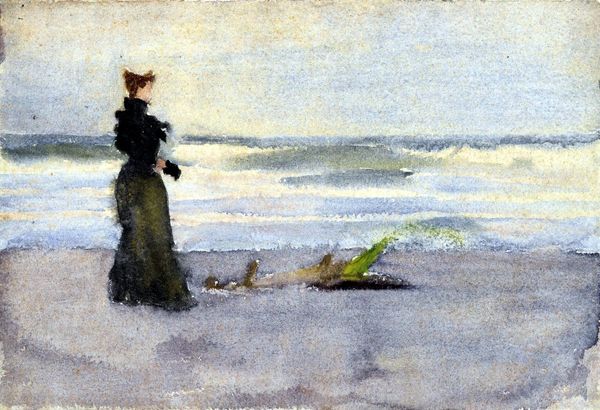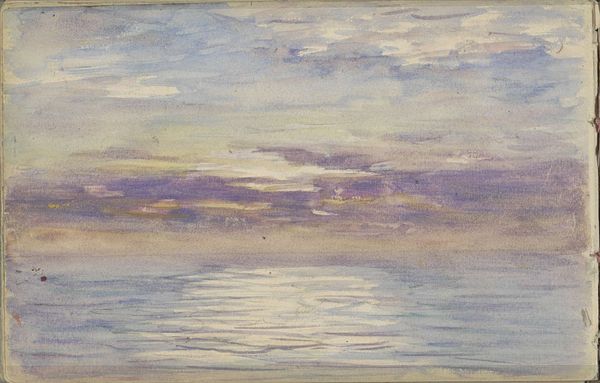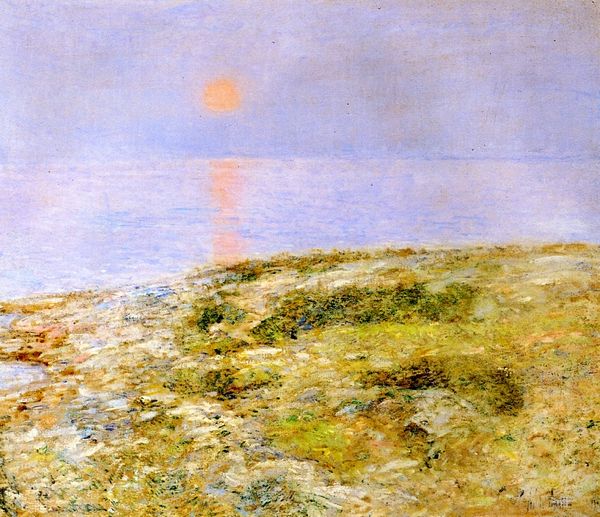
Copyright: Public domain
Editor: Thomas Anshutz's watercolor, "Man and Woman on the Beach," created in 1893, captures a fleeting moment by the sea. I am really struck by the muted colors. It's a quiet, almost melancholy scene. How do you interpret this work? Curator: The arrangement of color establishes its meaning. Notice the subtle gradations, the way the blues of the sky meet the yellows reflecting on the water. Anshutz orchestrates a dynamic play between the planar arrangement of the composition. Can you see the emphasis on geometric structure rather than emotional narrative? Editor: I do, particularly in the relationship between the woman, her chair, and the horizon line. There's a sense of measured stillness, despite the implied vastness of the ocean. Is there any emotional meaning evoked by such stark geometries, however? Curator: Perhaps "emotional meaning" is the wrong metric to analyze the painting; I would avoid the appeal to affect. Here, form dictates feeling. The color choices, particularly the way the limited palette unifies the separate compositional areas – sea, sky, shore, figures – suggest an attitude. Is that not an emotional tenor in its way? Editor: I see what you mean! I had initially focused on the overall mood and figures, and therefore missed the calculated balance in Anshutz’s composition. Curator: Exactly. This is a powerful instance of visual construction to contemplate! Editor: I’m going to keep this in mind from now on when analyzing new artworks. Thanks so much for your perspective.
Comments
No comments
Be the first to comment and join the conversation on the ultimate creative platform.
